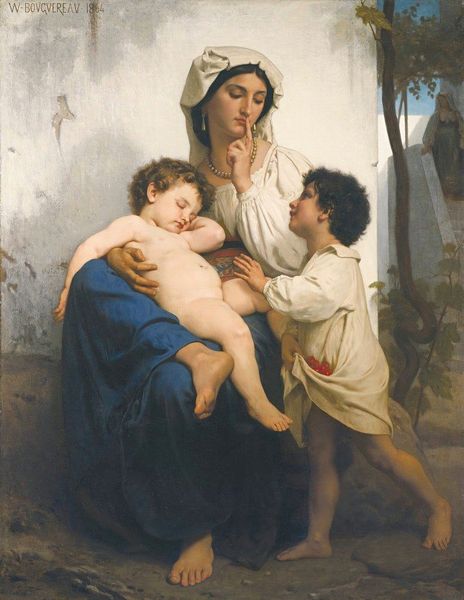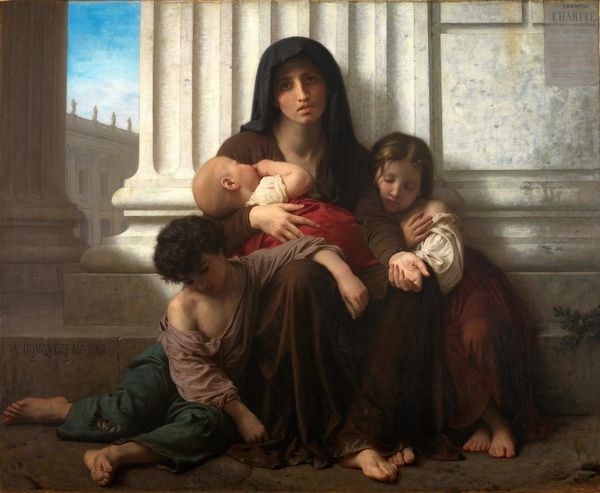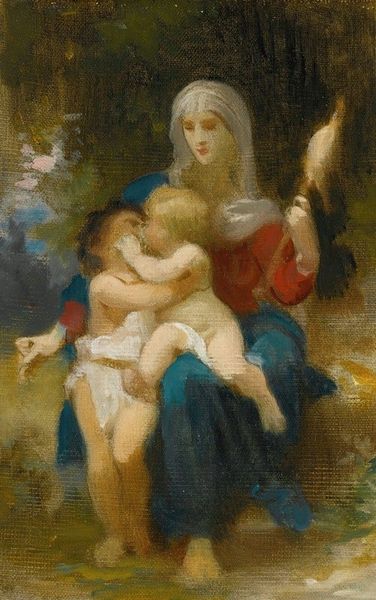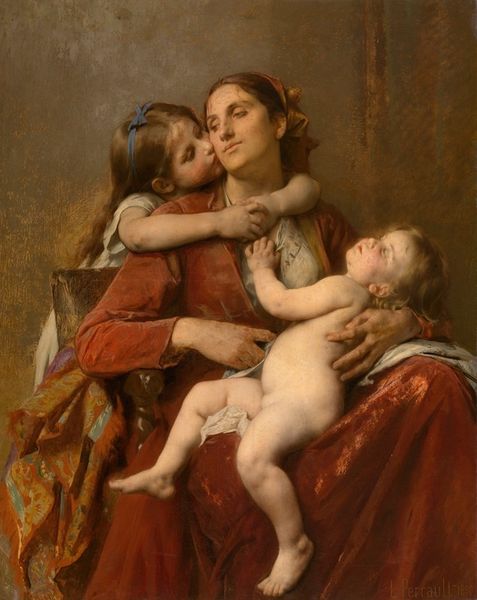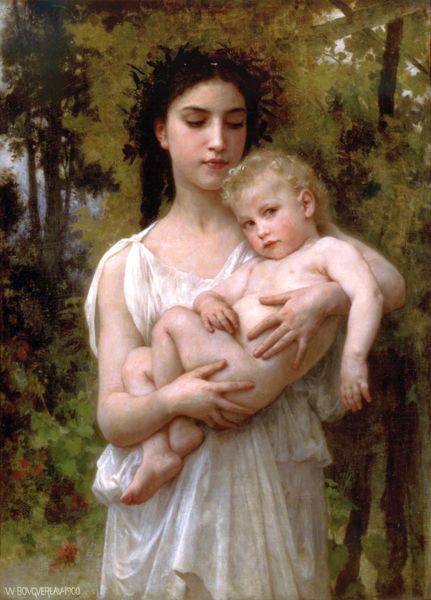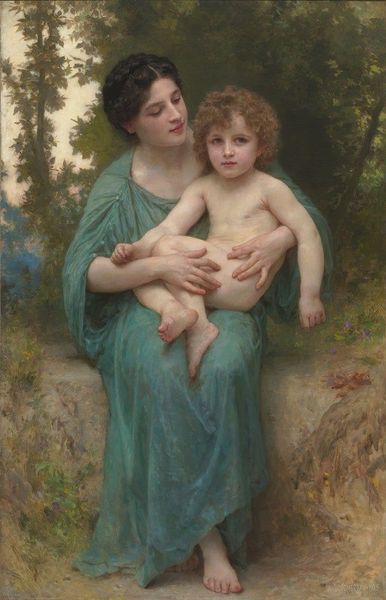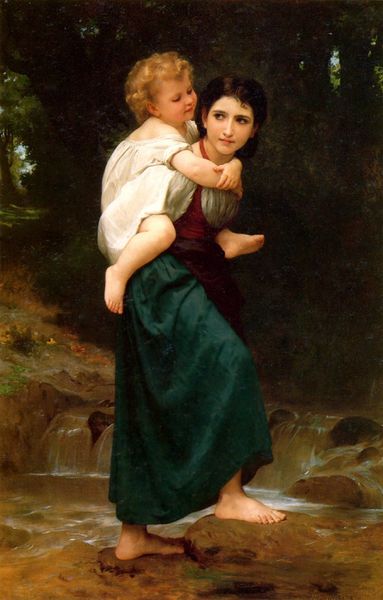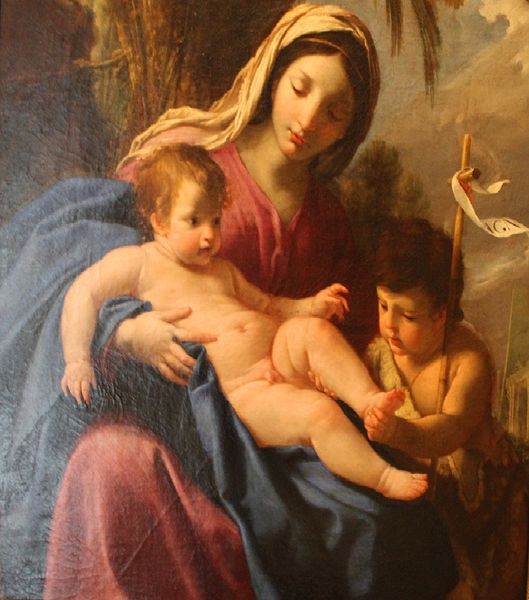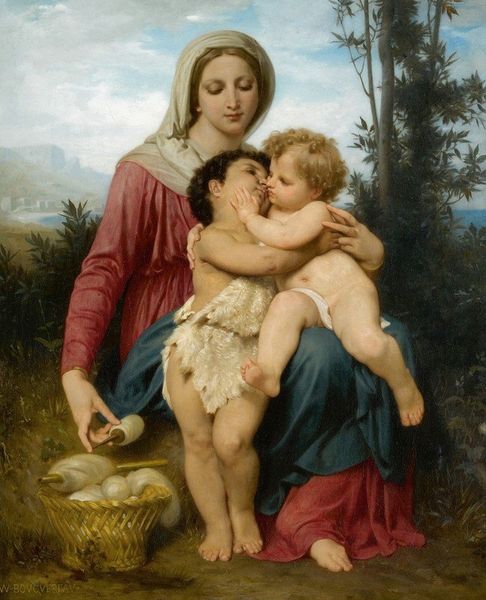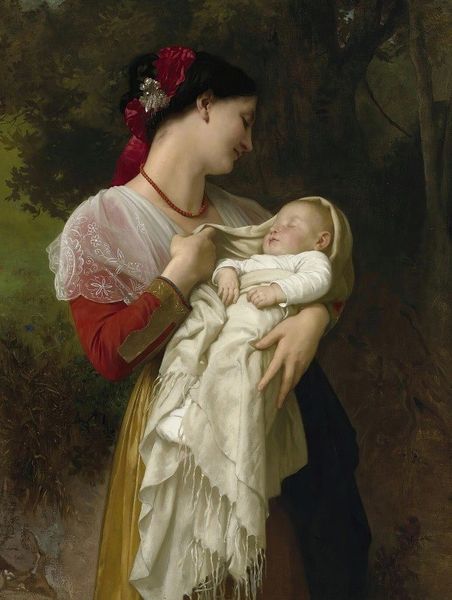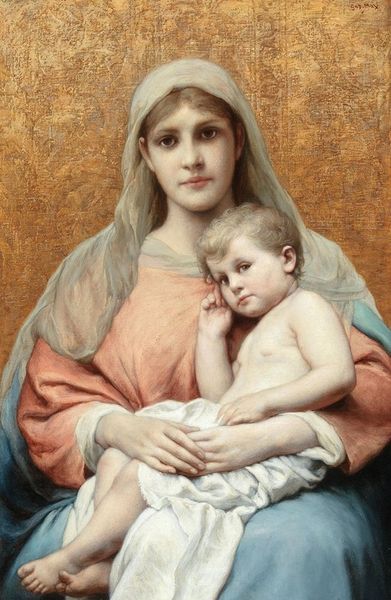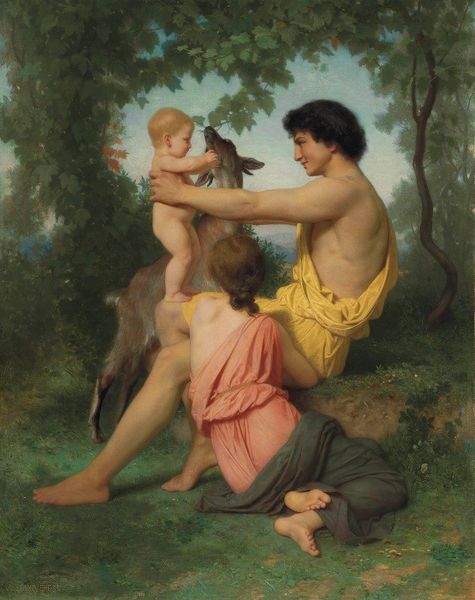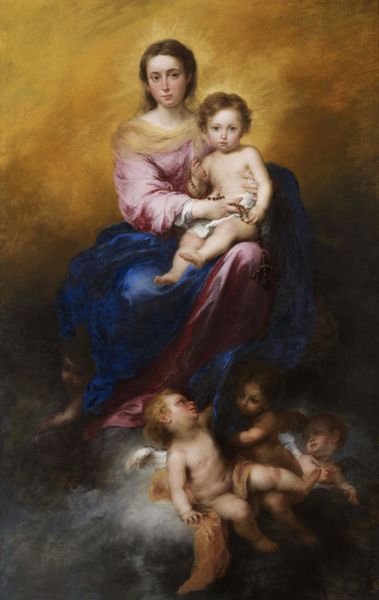
Dimensions: 35.5 x 38.5 cm
Copyright: Public domain
Editor: This is Ernest Hébert’s "Madonna with Christ Child and a Boy," painted in 1892. It's an oil painting, and the figures feel very tender. What strikes me, though, is how somber everyone looks despite the clear religious symbolism. What do you see in this piece? Curator: I see a painting deeply embedded in its historical moment, reflecting complex anxieties about faith and societal roles. While visually rooted in the Romantic style, Hébert is also grappling with a changing world. Note the almost staged presentation. Mary isn't just a mother, she’s also performing motherhood for the young John the Baptist. Does that performativity remind you of any modern societal expectations of women, or in terms of power? Editor: That’s interesting! It's like the painting isn't just devotional but also about the role of women as these figures of purity and motherhood, observed and almost judged. It isn’t as genuine as one would expect a painting of motherhood to be. Curator: Exactly. And it challenges the narrative we often see. Consider, too, the absence of Joseph. This image highlights a particularly female-centric power dynamic that subtly resists the patriarchal structure normally imposed. It's not overt, but Hébert places the feminine at the forefront, almost sidelining masculine authority within the scene. Editor: So it's almost a commentary on the established roles of women versus the reality? I never considered looking at a Madonna painting this way. Curator: Precisely. The painting is more than just religious iconography. It prompts us to think about how cultural ideals around gender and power are constructed and reinforced. It certainly brings fresh awareness to how such paintings can reinforce gender expectations!
Comments
No comments
Be the first to comment and join the conversation on the ultimate creative platform.
